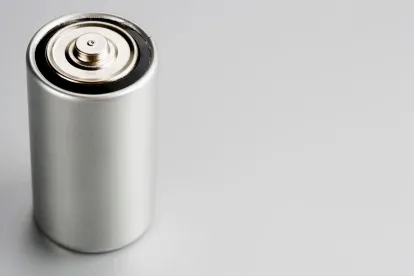Electric vehicles (EV) will soon get a boost in power and energy due to a relatively new cathode material known colloquially as NMC for its nickel-manganese-cobalt oxide chemistry. Battery experts predict NMC will, in the immediate future, replace the currently commercially used cobalt oxides and nickel-cobalt-aluminum oxides in EV and many other electronic applications. While the consensus is that NMC will play a critical role in the growing rechargeable battery cathode market, there is an intense disagreement in both the business and scientific community as to exactly what NMC is and who owns it.
Both the University of Chicago Argonne National Laboratory and 3M own patents covering different NMC materials. BASF licensed Argonne’s patents while Umicore licensed 3M’s. Argonne’s patents describe NMC as a two phase material consisting of distinct crystalline oxides while Umicore’s position is that their NMC is a one-phase solid solution that is covered by 3M’s patents.
The U.S. International Trade Commission (“ITC”) agrees with BASF and has issued a limited exclusion order (Exclusion Order) against Umicore for violating section 337 of the Tariff Act of 1930 by unlawfully importing, selling for importation, or selling within the United States after importation certain lithium metal oxide cathode materials covered by U.S. Patents Nos. 6,677,082 (“the ’082 patent”) and 6,680,143 (“the ’143 patent”). Additionally, the ITC reversed a prior determination that Umicore had not induced infringement and also finds that Umicore lacked a good faith belief of non-infringement.
BASF originally filed a complaint with the ITC on March 30, 2015 against Umicore and also Makita. BASF alleged that the cathode material Umicore supplied for the rechargeable batteries in Makita’s power tools infringed the ’082 and ’143 patents. Makita later settled with BASF and was removed from the ITC investigation. Subsequently, on February 29, 2016, the ITC found in favor of BASF for violation of section 337 by Umicore. The ITC found the accused products directly infringed claims 1-4, 7, 13, and 14 of the ’082 patent and that Umicore contributorily infringed claims 1-4, 8, 9, and 17 of the ’143 patent. The ITC found, however, that Umicore had not induced infringement of the asserted claims. Umicore petitioned for review of this decision and has now received an unfavorable determination by the ITC.
Following a public hearing on Thursday, November 17, 2016 in which the ITC “was interested in hearing presentations concerning the appropriate remedy (if any) and the effect that such remedy would have upon the public interest” the ITC upheld their prior determinations as to Umicore’s violation of section 337 and the validity of BASF’s patents. The ITC has further reversed a finding that Umicore didn’t induce infringement:
The Commission has determined to reverse the ALJ’s finding that Umicore does not induce infringement. The Commission finds that the record evidence fails to support the ALJ’s finding that Umicore had a good faith belief of non-infringement. The Commission has determined to affirm the ALJ’s finding that Umicore’s laches defense fails on the merits.
While Umicore has stated their intention to appeal this decision to the United States Court of Appeals for the Federal Circuit, this is a dramatic win for BASF in a closely watched battery battle. Further analysis on this decision is to follow.




 />i
/>i

